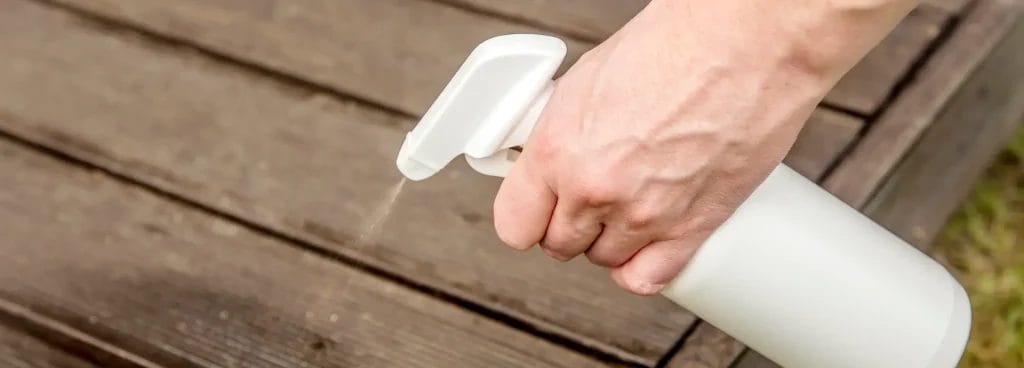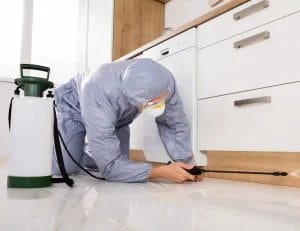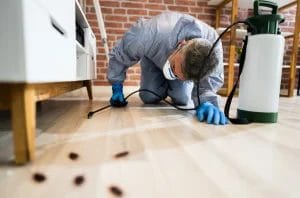How to get rid of roaches once and for all.

Table of Contents:
I. Introduction: The Dangers of Cockroach Infestations- Health Risks Posed by Roaches
- Damage Roaches Can Cause to Property
- The Hidden Toll on Mental Well-Being
- Common Types of Roaches
- Roach Habits
- Why Roach Infestations are Serious
- Common Signs of Infestations
- Tips on How to Detect Roach Hiding Spots
- Sanitation and Cleaning Measures
- Proper Food Storage
- Eliminating Entry Points
- Removing Clutter
- Using Essential Oils
- Safe Usage of Essential Oils
Dealing with a roach infestation can be an exasperating and unpleasant ordeal. These resilient pests have an uncanny ability to multiply rapidly and thrive in various environments. However, fear not, as there are effective techniques and a comprehensive approach to help you bid farewell to these unwanted invaders once and for all. In this article, we will explore proven methods to get rid of roaches and prevent their return, creating a roach-free haven for you and your family. By following these steps, you can regain control of your living space and enjoy the peace of mind that comes with a pest-free home.
Primarily, it is crucial to understand the potential health risks roaches pose. These pests are notorious carriers of disease-causing bacteria, such as Salmonella and E. coli, which can contaminate food and household surfaces. Exposure to these pathogens can lead to serious illnesses, particularly in vulnerable individuals like children and the elderly.
Moreover, roaches can trigger allergies and asthma attacks. They produce allergens that can cause a range of allergic reactions, including sneezing, coughing, and skin rashes. For those with asthma, the presence of roaches can worsen respiratory symptoms, making it difficult to breathe and affecting overall well-being.
Beyond health concerns, roaches can also wreak havoc on your property. Their penchant for chewing on materials like books, clothing, electrical wiring, and even wallpaper can lead to significant damage, resulting in costly repairs and replacements.
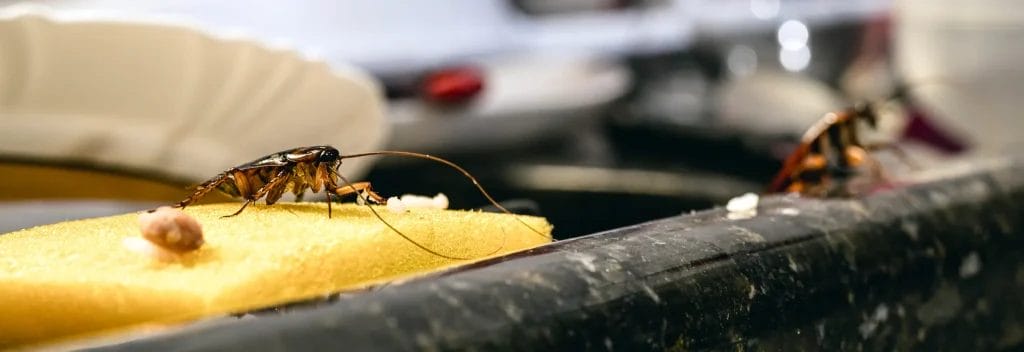
The Hidden Toll on Mental Well-Being
Additionally, the psychological impact of a roach infestation should not be underestimated. Sharing your living space with these pests can cause stress, anxiety, and a constant feeling of uncleanliness. It disrupts daily life and can leave you feeling uncomfortable in your own home.
Embracing Effective Solutions
Given these compelling reasons, finding effective solutions to help get rid of roaches completely becomes imperative for a safe, healthy, and peaceful living environment. In the following sections, we will delve into the best practices and proven methods to achieve this goal.
Prepare to say goodbye and get rid of roaches once and for all as we equip you with the knowledge and strategies to overcome this pesky problem. Remember, with the right approach and a dash of determination, you can create a home free from roach infestations and enjoy a renewed sense of comfort and well-being.
I. Understanding Roaches
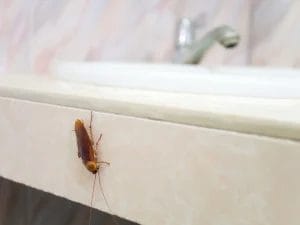 Roaches, also known as cockroaches, are a common household pest found in various parts of the world. They belong to the insect order Blattodea and are known for their adaptability and survival skills. Understanding the common types of roaches and their habits is essential in combating infestations effectively.
Roaches, also known as cockroaches, are a common household pest found in various parts of the world. They belong to the insect order Blattodea and are known for their adaptability and survival skills. Understanding the common types of roaches and their habits is essential in combating infestations effectively.Common Types of Roaches:
- German Cockroaches: These roaches are small in size, light brown or tan in color, and have two dark parallel stripes on their backs. They are commonly found in kitchens and bathrooms, as they prefer warm and humid environments.
- American Cockroaches: Also known as water bugs or palmetto bugs, these roaches are reddish-brown in color and larger in size. They can be found in basements, sewers, and dark, damp areas.
- Oriental Cockroaches: These roaches are shiny, dark brown or black in color and have a relatively larger size. They tend to inhabit cool and damp areas like basements, drains, and crawl spaces.
- Brown-banded Cockroaches: Smaller in size, these roaches have light brown or tan bodies with distinctive light-colored bands across their wings. They prefer warm and dry environments and are often found in bedrooms, closets, and furniture.
Roach Habits:
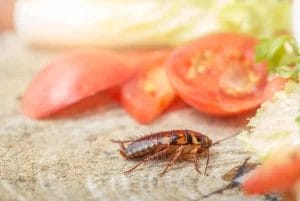
- Nocturnal Activity: Roaches are primarily nocturnal creatures, preferring to come out and forage for food during the night.
- Omnivorous Diet: Roaches are scavengers and can consume a wide range of organic matter, including food crumbs, decaying matter, and even glue or paper. Roaches love starches, sweets and greasy foods.
- Rapid Reproduction: Roaches reproduce quickly, with females laying multiple egg cases throughout their lifetime. Each case can contain up to 40 eggs, allowing for rapid population growth.
- Nymph Stages: Roaches undergo nymph stages as they grow, shedding their exoskeletons several times before reaching adulthood.
- Hidden Harborages: Roaches prefer dark, secluded areas, such as cracks, crevices, and behind appliances or furniture, where they can hide during the day.
A Roach infestation is a serious issue due to several reasons:

- Health Risks: Roaches are carriers of pathogens and bacteria that can contaminate surfaces and food, leading to various illnesses, including food poisoning, diarrhea, and allergies. They can also trigger asthma attacks and exacerbate respiratory conditions.
- Allergens: Roaches produce allergens that can cause allergic reactions, particularly in sensitive individuals. These reactions may manifest as sneezing, coughing, skin rashes, and eye irritation.
- Structural Damage: Roaches are known to feed on various materials, including books, fabric, paper, and even electrical wiring. Their gnawing and nesting habits can lead to structural damage and potential fire hazards.
- Reputation and Psychological Impact: Roach infestations can be stigmatizing and embarrassing. The presence of roaches can impact one’s reputation and cause emotional distress, leading to stress, anxiety, and a sense of uncleanliness.
Given the potential health risks, property damage, and psychological impact, addressing a roach infestation promptly and effectively is crucial to ensure a safe and comfortable living environment.
II. Identifying Signs of Roach Infestation in your home
To effectively address a roach infestation, it’s important to be able to identify the signs of their presence in your household. Here are some common signs to look out for:

-
- Live Roaches: Spotting live roaches is a clear indication of an infestation. They are typically active at night, so you may
see them scurrying away when you turn on lights suddenly or open cabinets. - Roach Droppings: Roach droppings resemble black pepper or coffee grounds and are often found in areas where roaches frequent, such as kitchen cabinets, countertops, and drawers. They may also be visible near roach nesting sites or along baseboards.
- Foul Odor: Roaches emit a musty, unpleasant odor. If you notice a strong and unpleasant smell in certain areas of your home, it could be a sign of a roach infestation.
- Egg Casings: Roaches lay their eggs in protective casings called oothecae. These casings are brown in color and have a capsule-like shape. You may find them in hidden areas, such as behind appliances, in cracks, or under furniture.
 Nymphs: Roach nymphs are young, immature roaches. They are smaller in size and lack wings. If you come across small roaches without wings, it indicates the presence of a breeding population.
Nymphs: Roach nymphs are young, immature roaches. They are smaller in size and lack wings. If you come across small roaches without wings, it indicates the presence of a breeding population.- Shed Exoskeletons: As roaches grow, they shed their exoskeletons. Finding these translucent exoskeletons in areas where roaches hide suggests an active infestation.
- Grease Smears: Roaches leave behind greasy smears on surfaces they come into contact with. Look for smudges or dark streaks along walls, cabinets, and baseboards.
- Live Roaches: Spotting live roaches is a clear indication of an infestation. They are typically active at night, so you may
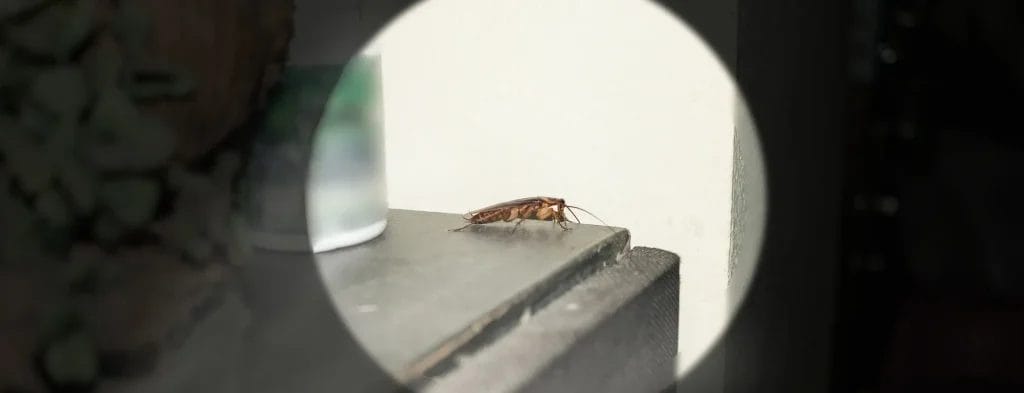
- Inspect Warm and Dark Areas: Roaches like warm and dark environments. Check areas such as the kitchen (especially near sinks and appliances), bathrooms, basements, utility rooms, and crawl spaces. Pay close attention to cracks, crevices, and gaps – these are perfect hiding spots for roaches.
- Use a Flashlight: Roaches are skilled at hiding in narrow spaces and cracks. Shine a flashlight into these areas to spot any signs of roach activity, including droppings, eggs, or live roaches.
- Check Cluttered Areas: Roaches seek out cluttered and undisturbed areas. Inspect areas with stacks of paper, cardboard boxes, and cluttered storage spaces, as they provide ideal hiding spots.
- Look for Entry Points: Roaches enter your home through small openings. Check for gaps around doors, windows, pipes, and vents. Seal any openings with caulk or weatherstripping to prevent their entry.
- Monitor at Night: Roaches are nocturnal, so observing their activity during the night can help you identify their hiding spots. Stay awake for a while in a quiet room and observe any movement or signs of roaches.
By being vigilant and thorough in your inspections, you can detect the signs of a roach infestation and identify their hiding spots, enabling you to target your treatment efforts effectively.
III. Prevention Measures – Keep roaches out of your home
A. Sanitation and Cleaning

Keeping your home clean is essential in preventing roach infestations. Roaches are attracted to food, moisture, and shelter, so depriving them of these resources is key to keeping them away. Here are some specific cleaning tips to prevent roach infestation:
- Regular Cleaning: Clean your home regularly, paying attention to areas where crumbs, food particles, and spills may accumulate. Vacuum floors, sweep and mop, and wipe down countertops, tables, and other surfaces to remove any potential food sources for roaches.
- Proper Trash Management: Dispose of garbage properly by using sealed trash cans with tight-fitting lids. Empty the trash regularly, and keep outdoor garbage bins clean and away from your home’s entrance.
- Eliminate Clutter: Clutter provides hiding places for roaches. Keep your home organized and decluttered, especially in storage areas, basements, and attics. Remove old newspapers, cardboard boxes, and unused items that can provide roaches with hiding spots.
- Seal Cracks and Crevices: Roaches can enter your home through tiny gaps and cracks in walls, floors, and foundations. Seal these entry points using caulk or weatherstripping to deny them a way into the home.
- Address Moisture Issues: Roaches thrive in moist environments. Fix any plumbing leaks, eliminate standing water, and ensure proper ventilation in areas prone to moisture, such as bathrooms, kitchens, and basements.
B. Proper Food Storage
Properly storing food is crucial in preventing roach infestations, as it removes their food sources and reduces their attraction to your home. Consider the following guidelines:
- Store Food in Airtight Containers: Transfer food, including dry goods like cereals, grains, and pet food, into sturdy, airtight containers. This prevents roaches from accessing the food and helps maintain its freshness.

- Keep Countertops Clean: Wipe down countertops and remove any food debris, crumbs, or spills promptly. Avoid leaving dirty dishes overnight, as they can attract roaches.
- Securely Store Trash: Dispose of food scraps and waste in sealed plastic bags before placing them in a tightly closed trash can. Regularly clean the trash can and keep it away from living areas.
- Mind Pet Food: Do not leave pet food out overnight. Store pet food in sealed containers and clean their feeding areas regularly.

- Clean Appliances: Roaches can find food residue in and around appliances. Regularly clean behind and underneath appliances like stoves, refrigerators, and toasters to remove any food particles.
Proper food storage and maintaining a clean environment are essential preventive measures against roach infestations. By depriving roaches of their food and shelter sources, you make your home less appealing to them, reducing the likelihood of an infestation.

To effectively prevent roach infestations, it’s important to identify and seal the common entry points through which roaches can gain access to your home. Here are some common entry points to be aware of:
- Gaps and Cracks in Walls: Inspect both interior and exterior walls for any gaps or cracks. Pay close attention to areas near windows, doors, utility lines, and pipes.
- Crevices and Gaps around Windows and Doors: Check for gaps or openings around windows and doors, including the frames and sills. Roaches can squeeze through even small openings, so sealing these areas is crucial.
- Vents and Utility Openings: Roaches can enter through vents, such as those for air conditioning, heating, or dryer vents. Additionally, utility openings, such as plumbing or electrical entry points, can provide access. Ensure these openings are properly screened or sealed.
- Damaged Screens: Screens on doors and windows can develop tears or gaps over time. Inspect and repair any damaged screens to prevent roaches from entering through these openings.
Here are some ways to seal cracks and crevices:
- Caulk: Use a silicone-based caulk to seal cracks in walls, baseboards, and other surfaces. Fill in gaps and crevices thoroughly to deny roaches entry points.

- Weatherstripping: Apply weatherstripping around doors and windows to create a tight seal and prevent roaches from squeezing through gaps.
- Door Sweeps: Install door sweeps on exterior doors to seal the gap between the door and the floor. This prevents roaches from entering under the door.
- Expansion Foam: Expansion foam can be used to seal larger gaps or openings around pipes, utility lines, and vents. It expands to fill the space and provides an effective barrier against roach entry.
Additionally, it’s important to address leaks and fix damaged screens:
- Plumbing Leaks: Roaches are attracted to moisture, so fixing plumbing leaks is crucial. Inspect and repair any leaking pipes, faucets, or drains in your home to eliminate potential water sources.
- Damaged Screens: Regularly inspect screens on doors and windows for tears, gaps, or holes. Repair or replace damaged screens promptly to prevent roaches from entering through these openings.
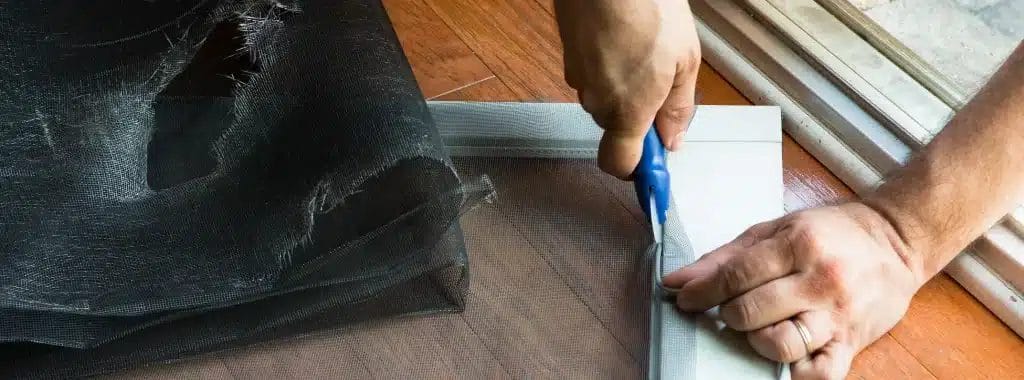
By sealing cracks and crevices, repairing leaks, and fixing damaged screens, you create a physical barrier that denies roaches access to your home. These preventive measures help to reinforce the integrity of your home’s structure and minimize the likelihood of roach infestations.
D. Removing Clutter
- Favorable Environment for Roaches: Cluttered areas, such as stacks of paper, cardboard boxes, and unused items, provide ideal hiding spots for roaches. They can easily nest within the clutter and go unnoticed, making it difficult to detect and eliminate them.

- Food Source Accumulation: Cluttered areas are more likely to accumulate food debris, crumbs, and spills. This creates a readily available food source for roaches, attracting them to these areas and increasing the risk of infestation.
- Obstructed Cleaning and Inspection: Clutter can hinder cleaning efforts and make it challenging to thoroughly inspect and treat areas for roach infestations. It becomes difficult to reach hidden corners, cracks, and crevices where roaches may be present.
Tips for Decluttering and Organizing Spaces:
- Take it Step by Step: Begin decluttering one room or area at a time. This allows you to focus on specific spaces, making the task more manageable and less overwhelming.
- Sort and categorize: Create piles for items you want to keep, donate, sell, or discard. Be honest with yourself about what you truly need and use. Consider donating or selling items that are in good condition but no longer serve a purpose for you.

- Create Storage Solutions: Invest in storage containers, shelves, and organizers to help keep your belongings organized and easily accessible. Utilize vertical space and maximize storage capacity to reduce visual clutter.
- Regular Maintenance: Establish a routine for regular cleaning and maintenance to prevent clutter from accumulating again. Set aside time each day or week to clean and organize, ensuring a clutter-free environment.
- Simplify and Minimize: Consider adopting a minimalist approach by reducing unnecessary items and simplifying your possessions. Embrace a mindset of “less is more” to make decluttering an ongoing lifestyle habit.
By removing clutter, you eliminate roaches’ preferred hiding spots and reduce their access to food sources. Decluttering and organizing your living spaces make it easier to clean, inspect, and treat areas, enabling you to maintain a roach-free environment more effectively.
Regular maintenance is essential in preventing clutter from building up again. By staying proactive and dedicating time to tidying and organizing, you create a welcoming space that is less attractive to roaches and other pests.
IV. Home Remedies for Roach Control and Prevention
A. Using Essential Oils
Essential oils can be effective in repelling roaches due to their strong scents and properties that roaches find unpleasant. While they may not eradicate an existing infestation entirely, they can serve as a deterrent and help in preventing roach presence. Here’s what you need to know about using essential oils for roach control:
- Effectiveness of Essential Oils: Essential oils can help repel roaches to some extent, but their effectiveness may vary depending on factors such as the type of oil, concentration, and the severity of the infestation. They work by emitting strong scents that roaches find repulsive, discouraging them from entering treated areas.
- Essential Oils with Roach-Repelling Properties: Several essential oils are known for their roach-repelling properties. These include:

- Peppermint Oil: The strong smell of peppermint oil is effective in deterring roaches. It masks the scent of food and disrupts their communication signals.
- Eucalyptus Oil: Eucalyptus oil has a strong, pungent scent that roaches find unpleasant, making it a natural deterrent.
- Lavender Oil: Lavender oil has a calming scent for humans but repels roaches. Its strong aroma can disrupt their nervous system and keep them away.
- Tea Tree Oil: Tea tree oil is known for its antimicrobial properties. While its effectiveness in repelling roaches is not as strong as other oils, it can still be used as part of a natural roach control approach.
- Safe Usage of Essential Oils: When using essential oils for roach control, it’s important to follow these safety guidelines:

- Dilute Properly: Essential oils are highly concentrated and potent. Dilute them with a carrier oil, such as coconut oil or water, before use, following the recommended dilution ratios.
- Test for Allergies: Before using any essential oil, conduct a patch test on a small area of your skin to check for any allergic reactions or sensitivities
- Use Caution around Pets and Children: Some essential oils can be toxic to pets and children. Keep essential oil solutions out of their reach and ensure proper ventilation when using them.
- Avoid Direct Contact with Surfaces: Essential oils can stain or damage certain surfaces. Use them sparingly and avoid direct contact with furniture, fabrics, or delicate surfaces.
- Reapply as Needed: Essential oils may lose their potency over time, so reapply them periodically to maintain their effectiveness.
It’s important to note that while essential oils can help repel roaches, they may not eliminate an existing infestation. For severe infestations, it’s recommended to use a combination of natural remedies and professional pest control methods.
Remember, natural remedies should be used as part of a comprehensive approach to roach control, including proper sanitation, sealing entry points, and regular maintenance.
B. Baking Soda and Sugar Trap
A DIY roach trap using baking soda and sugar can be an effective method to attract and kill cockroaches. The mechanism behind this trap is based on the roaches’ attraction to sugar and their inability to digest baking soda properly. When ingested, the combination of baking soda and sugar creates a reaction in the roach’s digestive system, leading to gas build-up and eventual death.
Here are step-by-step instructions on setting up the trap:
- Mix equal parts of baking soda and sugar: In a bowl, combine equal amounts of baking soda and sugar. Mix them thoroughly to ensure even distribution.

- Identify strategic locations: Determine areas where roaches are frequently seen or suspected, such as near entry points, along baseboards, or behind appliances. These are ideal spots to place the traps.
- Sprinkle the mixture: Sprinkle a thin layer of the baking soda and sugar mixture in the selected areas. Focus on areas where roaches are likely to come into contact with it.
- Monitor and replenish: Check the traps regularly to see if they have attracted roaches. If the mixture becomes damp or depleted, clean it out and replenish with fresh bait.
- Dispose of trapped roaches: If you find dead roaches in the trap, carefully dispose of them in a sealed plastic bag and place them in an outdoor garbage bin.
- Regular maintenance: It’s essential to maintain cleanliness and regularly refresh the traps. Clean the areas surrounding the traps to prevent other pests or debris from interfering with the effectiveness of the bait.
It’s important to note that this DIY trap may not get rid of an entire roach infestation on its own. It can be effective in reducing the roach population and complementing other roach control measures such as sanitation, sealing entry points, and professional pest control if needed.
Regular maintenance is crucial for the trap’s effectiveness. Clean and replenish the traps as needed to ensure the bait remains fresh and appealing to roaches. Additionally, continue practicing good sanitation and other preventive measures to address the root causes of the roach infestation and maintain a roach-free environment.
C. Diatomaceous Earth

Diatomaceous earth is a natural and non-toxic substance that can effectively kill and get rid of cockroaches by dehydrating them. It is made from the fossilized remains of microscopic aquatic organisms called diatoms. The fine powder-like texture of diatomaceous earth contains sharp edges that damage the roaches’ exoskeleton, causing them to lose moisture and eventually die.
Here’s what you need to know about using diatomaceous earth as a natural roach killer:
- Precautions and Proper Usage:
- Use food-grade diatomaceous earth: Make sure to purchase food-grade diatomaceous earth, as it is safe for use around humans and pets. Avoid using pool-grade diatomaceous earth, which is chemically treated and can be harmful.

- Wear protective gear: When applying diatomaceous earth, wear a dust mask and gloves to avoid inhaling the fine particles or irritating your skin.
- Keep it dry: Diatomaceous earth works best when dry. Avoid applying it in areas prone to moisture or where it may get wet, as moisture reduces its effectiveness.
- Use food-grade diatomaceous earth: Make sure to purchase food-grade diatomaceous earth, as it is safe for use around humans and pets. Avoid using pool-grade diatomaceous earth, which is chemically treated and can be harmful.
- Applying Diatomaceous Earth:
- Identify problem areas: Locate areas where roaches are active or suspected, such as cracks, crevices, baseboards, and other hiding spots.
- Lightly dust the powder: Using a small brush or duster, lightly dust a thin layer of diatomaceous earth along the areas where roaches are likely to travel or hide.
- Pay attention to entry points: Focus on applying diatomaceous earth near entry points, such as windows, doors, and gaps in walls, to create a barrier that roaches must cross.
- Maintaining Effectiveness:
- Reapply as needed: Over time, diatomaceous earth may become less effective due to dust or moisture. If the powder gets damp or clumps together, remove and replace it with fresh diatomaceous earth.
- Regularly monitor and clean: Check the treated areas periodically for roach activity. If you notice dead roaches, safely dispose of them and clean the area before reapplying diatomaceous earth.
Remember, diatomaceous earth will prevent cockroaches but may not eliminate an existing infestation on its own. It is most effective when used in conjunction with other roach control methods, such as sanitation, sealing entry points, and proper maintenance.
Always follow the manufacturer’s instructions for the specific diatomaceous earth product you are using to ensure safe and effective application.
V. Professional Pest Control – ways to get rid of pesky cockroaches

There are situations where professional intervention is necessary to effectively address a roach infestation. Here are some instances where hiring a professional pest control service is the best way to get rid of:
- Severe Infestation: If the roach infestation is extensive or severe, professional assistance is often recommended. Professionals have the expertise, experience, and access to specialized products and techniques to effectively handle large-scale infestations.
- Persistent Infestation: If you have tried various DIY methods without success and the roach problem persists, it may be an indication that the infestation is beyond your ability to control. Professional pest control technicians can assess the situation, identify the underlying causes, and provide targeted treatment to eliminate the infestation.
- Health and Safety Concerns: Roaches can pose health risks, especially for individuals with allergies, asthma, or other respiratory conditions. If the presence of roaches is causing significant health concerns or affecting the well-being of vulnerable individuals, seeking professional help is advisable.
Benefits of hiring a professional pest control service:
- Expertise and Knowledge: Professional pest control technicians are trained in identifying the species, behavior, and habits of roaches. They can accurately assess the infestation, determine the best course of action, and implement effective treatment methods.

- Targeted Treatment: Professionals have access to a range of products and treatments that are more potent and effective in eliminating roaches. They can customize the treatment plan based on the specific needs of your infestation, ensuring maximum efficacy.
- Safety and Health: Pest control companies follow strict guidelines and regulations to ensure the safe and proper use of pesticides and treatments. They have the necessary equipment and knowledge to handle potentially hazardous substances while minimizing risks to human health and the environment.
- Long-Term Prevention: Professional pest control services not only focus on eliminating the current infestation but also provide recommendations and preventive measures to avoid future roach problems. They can advise on sanitation practices, structural repairs, and ongoing maintenance to create a less conducive environment for roaches.
Tips on choosing a reliable pest control company:
- Research and Recommendations: Seek recommendations from friends, family, or neighbors who have had positive experiences with pest control services. Additionally, research online reviews and ratings to gauge the reputation and reliability of different companies.

- Licensing and Certification: Ensure that the pest control company is properly licensed and certified to perform pest control services in your area. This ensures that they meet the required standards and have undergone appropriate training.
- Experience and Expertise: Look for companies with extensive experience in dealing with roach infestations. Inquire about their knowledge of roach species and their treatment methods to assess their expertise in handling your specific issue.
- Guarantees and Follow-up Services: Inquire about the company’s guarantees and warranties. A reputable pest control company will stand behind their work and offer follow-up services if needed.
- Integrated Pest Management (IPM) Approach: Choose a company that employs an Integrated Pest Management approach. This holistic approach focuses on long-term prevention, minimizes the use of pesticides, and emphasizes non-chemical solutions whenever possible.
By hiring a professional pest control service, you can benefit from their expertise, targeted treatments, and long-term prevention strategies, ensuring effective roach control and peace of mind.
VI. Maintaining a Roach-Free Home
Consistency in roach prevention measures is crucial to ensure a long-term roach-free home. Even after successfully eliminating a roach infestation, it’s important to remain vigilant and proactive. Here are some tips for regular monitoring, maintenance, and prompt action:

- Regular Monitoring: Continuously monitor your home for any signs of roach activity. Stay alert for live roaches, droppings, egg casings, or any other indicators of their presence. Regular monitoring helps catch any early signs of a potential reinfestation.
- Ongoing Maintenance: Maintain good sanitation practices, such as cleaning up food spills promptly, storing food in airtight containers, and regularly disposing of trash. Keep your living spaces clutter-free and organized to minimize hiding spots for roaches. Address any plumbing leaks or moisture issues promptly to prevent roach attractants.
- Seal Entry Points: Regularly inspect your home for cracks, gaps, or openings that can serve as entry points for roaches. Seal them using caulk, weatherstripping, or other appropriate methods to prevent roach infiltration.
- Address Signs of Reinfestation Promptly: If you notice any signs of a roach reinfestation, such as live roaches or droppings, take immediate action. Revisit the appropriate preventive measures, such as applying residual insecticides, reapplying natural deterrents, or contacting a professional pest control service if necessary.
- Seek Professional Assistance if Needed: If your efforts to maintain a roach-free home are not effective or if you encounter persistent or severe infestations, don’t hesitate to seek professional pest control assistance. Professionals can provide targeted treatments and ongoing monitoring to ensure long-term control.
- Educate and Involve Household Members: Ensure everyone in your household is aware of the importance of roach prevention measures. Educate them about good sanitation practices, sealing entry points, and the role they play in maintaining a roach-free home. Encourage everyone to be proactive in maintaining a clean and clutter-free environment.
Consistency, vigilance, and prompt action are key to maintaining a roach-free home. By regularly monitoring, implementing preventive measures, and addressing any signs of reinfestation promptly, you can minimize the risk of roach problems and enjoy a clean and pest-free living environment.
In conclusion, addressing a roach infestation and maintaining a roach-free home requires a comprehensive and persistent approach. Let’s summarize the key points discussed:
- Understanding Roaches: Learn about the common types of roaches and their habits to better tackle the infestation.
- Identifying Signs of Roach Infestation: Recognize the signs such as live roaches, droppings, and egg casings to confirm the presence of roaches.

- Prevention Measures: Emphasize the importance of sanitation, proper food storage, eliminating entry points, removing clutter, and regular maintenance to prevent roach infestations.
- Natural Remedies: Consider using essential oils, baking soda and sugar traps, and diatomaceous earth as natural solutions to repel or eliminate roaches.
- Professional Pest Control: Know when it’s necessary to seek professional assistance and the benefits of hiring experts in severe or persistent infestations.
- Maintaining a Roach-Free Home: Stress the importance of consistency in implementing preventive measures, regular monitoring, prompt action in case of reinfestation, and involving household members in roach control efforts.
Now it’s time to take action! Assess your home for any signs of roach infestation and implement the suggested solutions. Start with sanitation, sealing entry points, decluttering, and proper food storage. Consider using natural remedies or seek professional help if needed.
Remember, persistence is crucial. Stay vigilant, regularly monitor your home, and promptly address any signs of reinfestation. With determination and consistent efforts, you can achieve and maintain a roach-free home, creating a healthier and more comfortable living environment for you and your family.
Take control of the situation, follow the steps outlined in this guide, and enjoy the peace of mind that comes with a roach-free home.

 Nymphs: Roach nymphs are young, immature roaches. They are smaller in size and lack wings. If you come across small roaches without wings, it indicates the presence of a breeding population.
Nymphs: Roach nymphs are young, immature roaches. They are smaller in size and lack wings. If you come across small roaches without wings, it indicates the presence of a breeding population.




